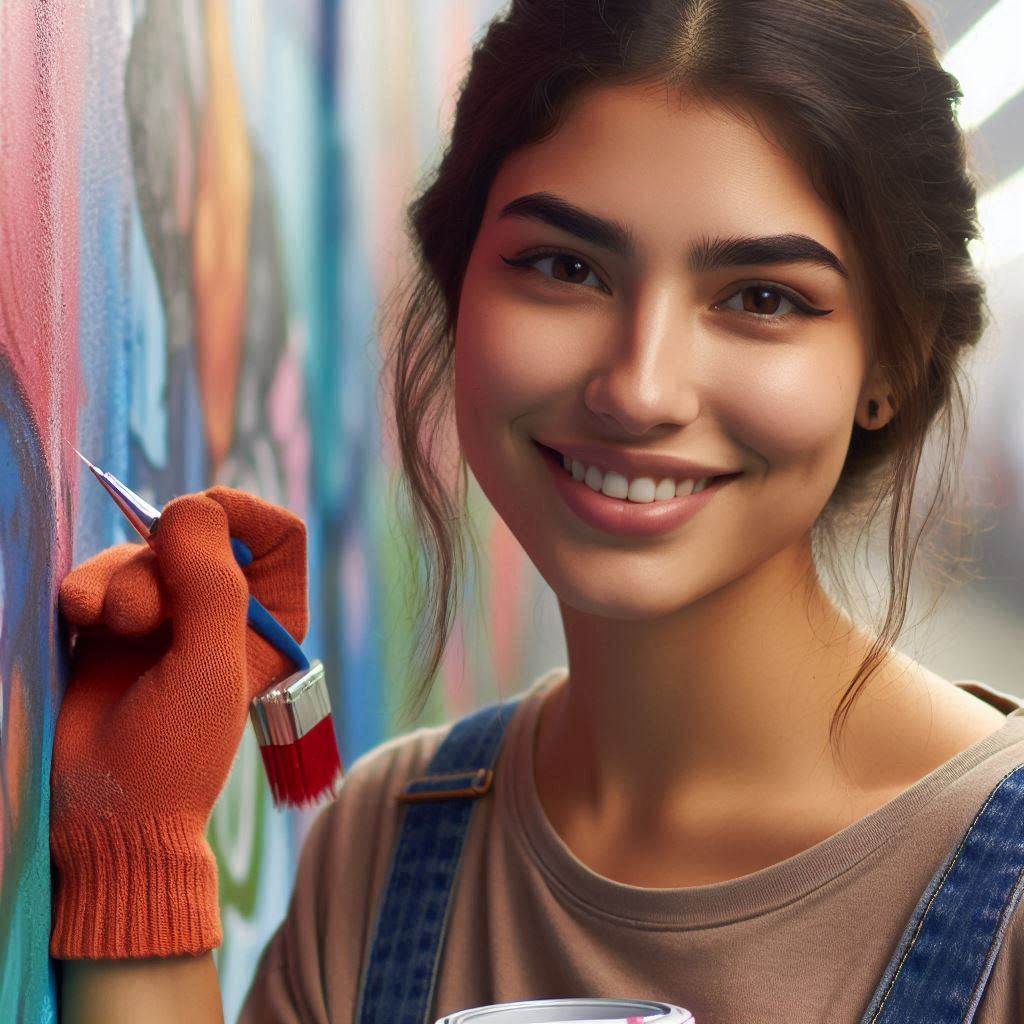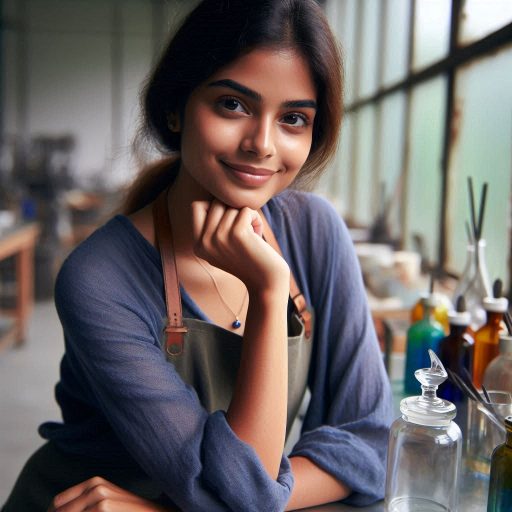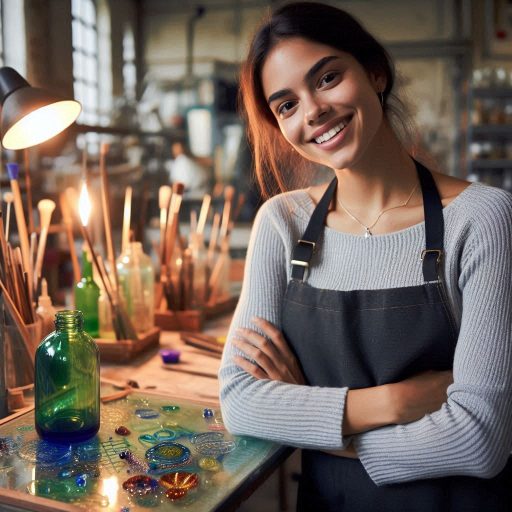Introduction
Mural painting is a form of artwork that involves painting directly on walls or ceilings.
It is an essential part of art and design as it adds life and character to a space.
When it comes to mural painting, having the right tools is crucial for a successful outcome.
Mural painting allows artists to create large-scale works that make a statement.
It transforms public spaces, buildings, and even homes into vibrant and engaging environments.
The impact of a mural can be profound, conveying cultural, social, or environmental messages.
The essential tools for mural painting include paintbrushes, rollers, and paint trays.
Other necessary tools are tape measures, ladders, scaffolding, and drop cloths.
Quality acrylic or spray paint, primer, and sealant are also essential for a durable finish.
Research and Planning
Importance of thorough research before starting a mural project
Before embarking on a mural project, thorough research is crucial.
It helps ensure that your mural aligns with the space and audience.
Begin by understanding the location’s history and architecture.
Research the preferences and cultural context of your audience.
This knowledge will guide your design choices and prevent any cultural missteps.
Tools needed for planning the design, such as sketchbooks, measuring tapes, and grid paper
Planning is equally important and involves several key tools.
A sketchbook is essential for brainstorming and sketching initial ideas.
It allows you to experiment with different concepts and compositions.
Use it to explore various styles and elements before finalizing your design.
Measuring tapes are indispensable for accurate planning.
They help you measure the wall’s dimensions precisely, ensuring your mural fits perfectly within the space.
Transform Your Career Today
Unlock a personalized career strategy that drives real results. Get tailored advice and a roadmap designed just for you.
Start NowAccurate measurements prevent design issues and ensure that the proportions of your mural are correct.
Grid paper is another valuable tool.
It helps in scaling your design from a small sketch to the full-sized mural.
By creating a grid on both your sketch and the wall, you can transfer your design with precision.
This technique ensures that each element of your mural is proportional and correctly positioned.
Combining these tools and approaches will streamline your planning process.
Thorough research provides a strong foundation, while tools like sketchbooks, measuring tapes, and grid paper ensure your design is both accurate and effective.
Proper planning not only enhances the final outcome but also makes the painting process smoother and more enjoyable.
Read: Networking Tips for Art and Design Professionals
Surface Preparation
Choosing the Right Tools
Before you start mural painting, it is crucial to prepare the surface properly.
This step can make a significant difference in the final outcome of your work.
Here are some essential tools you will need for surface preparation:
Sandpaper
Sandpaper is a vital tool for smoothing out rough surfaces and creating a clean and even base for your mural.
Make sure to use different grits of sandpaper to achieve the desired level of smoothness.
Primer
Priming the surface before painting is essential as it helps the paint adhere better and provides a more durable finish.
Choose a primer that is suitable for the surface you will be painting on.
Drop Cloths
Protecting the surrounding area is also crucial during the surface preparation stage.
Use drop cloths to cover floors, furniture, and other items to prevent them from getting paint splatters or spills.
Importance of Surface Preparation
Properly preparing the surface before painting is crucial for achieving a professional-looking mural.
Here are some reasons why surface preparation is essential:
Transform Your Career Today
Unlock a personalized career strategy that drives real results. Get tailored advice and a roadmap designed just for you.
Start NowSmooth Finish
Smoothing out any imperfections on the surface ensures that your mural will have a clean and polished look.
This step is especially important for achieving a professional finish.
Long-lasting Results
By properly preparing the surface and using the right tools, you can ensure that your mural will last longer without peeling or fading.
This will help preserve your artwork for years to come.
Improved Adhesion
Applying a primer and smoothing the surface helps the paint adhere better, ensuring that it will not peel or chip off easily.
This is essential for the longevity of your mural.
Professional Quality
Surface preparation is a crucial step in achieving a professional-quality mural.
Taking the time to prepare the surface properly will result in a more polished and professional-looking final product.
Surface preparation is a vital part of mural painting that should not be overlooked.
By using the right tools and following the proper steps, you can ensure a high-quality finish for your mural.
Read: Famous American Muralists and Their Iconic Works
Painting Tools
When it comes to mural painting and design, having the right tools is essential for a successful project.
In this section, we will discuss the painting tools that are indispensable for mural painting.
Some essential painting tools for mural painting include paint brushes, rollers, and paint trays.
Each of these tools plays a crucial role in achieving the desired result.
Paint Brushes
Paint brushes are perhaps the most important tools for mural painting.
There are different types of brushes available, each serving a specific purpose.
Some of the common brushes used in mural painting include:
- Flat Brushes: These brushes are ideal for covering large areas with paint.
- Round Brushes: These brushes are great for creating fine lines and intricate details.
- Detail Brushes: These brushes have a small tip, perfect for adding intricate details to the mural.
It’s essential to have a variety of brushes on hand to cater to different painting techniques and styles.
Rollers
Rollers are another essential tool for mural painting, especially when covering large surfaces.
Transform Your Career Today
Unlock a personalized career strategy that drives real results. Get tailored advice and a roadmap designed just for you.
Start NowThere are various types of rollers available, each designed for different painting techniques.
Some common types include:
- Nap Rollers: These rollers are ideal for applying paint to uneven surfaces, such as textured walls.
- Foam Rollers: These rollers are great for creating a smooth finish on flat surfaces.
- Texture Rollers: These rollers have patterns on them, ideal for creating textured effects on the mural.
Choosing the right roller for the job can make a significant difference in the final outcome of the mural.
Paint Trays
Paint trays are essential for holding paint while you work on the mural.
They come in various sizes and materials, such as plastic or metal.
Some paint trays also come with liners for easy cleanup.
Having a paint tray with compartments can help you organize different colors and keep the paint from drying out.
It’s essential to clean the paint tray thoroughly after each use to ensure longevity.
Overall, these painting tools are crucial for any mural painting project, and investing in high-quality tools can make a significant difference in the final result.
Read: Art and Design Professions: Career Growth and Salaries

Color Mixing and Storage
When it comes to mural painting and design, color mixing and storage are essential aspects that can greatly impact the final outcome of your artwork.
Properly mixing and storing paint colors is crucial for achieving the desired hues and maintaining the quality of your work.
Tools needed for mixing and storing paint colors:
Palette knives are versatile tools that are used for mixing colors on a palette.
They come in various shapes and sizes, allowing artists to create custom color blends.
Paint palettes, on the other hand, provide a flat surface for mixing colors and experimenting with different combinations.
Airtight containers are essential for storing any unused paint.
They help prevent colors from drying out and can extend the lifespan of your paints.
It’s important to keep your colors fresh and ready for future use.
Importance of proper color mixing for achieving the desired hues in mural design
Proper color mixing is crucial for achieving the specific hues and shades you envision in your mural design.
It allows you to create custom colors that are unique to your artwork and can enhance the overall visual impact of your piece.
Transform Your Career Today
Unlock a personalized career strategy that drives real results. Get tailored advice and a roadmap designed just for you.
Start NowBy mastering color mixing techniques, you can achieve subtle transitions between colors, create depth and dimension in your mural, and evoke certain emotions through the use of color.
This level of control over your palette is essential for creating a cohesive and visually striking mural.
Whether you’re working on a small-scale mural or a large outdoor mural, understanding the fundamentals of color mixing and storage is key to producing high-quality artwork that resonates with viewers.
Take the time to invest in the right tools and practice your color mixing skills to elevate your mural painting and design.
Read: How to Start a Career as a Professional Muralist
Detailing and Touch-Ups
Tools for detailing and adding finishing touches to the mural, such as fine brushes, stencils, and sponges
When it comes to mural painting and design, detailing and touch-ups are essential to bring the artwork to life.
To achieve precision and perfection, artists rely on a variety of tools and techniques to add those final touches that make the mural truly stand out.
One of the most important tools for detailing is a set of fine brushes.
These brushes allow artists to carefully add intricate designs, fine lines, and small details to the mural.
Whether it’s creating delicate patterns or adding highlights, fine brushes are a must-have for any muralist.
Tips for touching up any mistakes or imperfections in the design
In addition to brushes, stencils are another valuable tool for detailing.
Stencils can help artists create uniform shapes, patterns, and designs with ease.
By using stencils, artists can quickly and efficiently add complex elements to their murals, saving time and ensuring consistency in their work.
Sponges are also useful for detailing and adding texture to murals.
By dabbing or dragging a sponge across the surface, artists can create unique effects such as clouds, foliage, or gradients.
Sponges are versatile tools that allow artists to experiment with different techniques and add depth to their artwork.
When it comes to touch-ups, every artist is bound to make mistakes or encounter imperfections in their design.
It’s essential to have the right tools and techniques to correct these errors and ensure the mural looks flawless.
One of the best tips for touching up mistakes is to keep a small brush on hand.
A fine-tipped brush can be used to carefully cover up any smudges, smears, or unwanted marks on the mural.
Transform Your Career Today
Unlock a personalized career strategy that drives real results. Get tailored advice and a roadmap designed just for you.
Start NowBy using a steady hand and a small amount of paint, artists can effectively conceal mistakes and blend them seamlessly into the design.
Basically, detailing and touch-ups are crucial aspects of mural painting and design.
Protection and Maintenance
When it comes to mural painting and design, it’s crucial to not only focus on the artistic process but also on the long-term protection and maintenance of the artwork.
Here are some essential tools and guidelines for ensuring the longevity and vibrancy of your murals:
Tools for protecting the mural after completion
- Clear sealants: Investing in a high-quality clear sealant is essential for protecting your mural from elements such as rain, sun, and pollution.
- UV protectants: UV rays can cause colors to fade over time.
Using UV protectants will help maintain the vibrancy of the mural. - Protective coatings: Consider applying a protective coating to the mural to prevent damage from scratching or vandalism.
- Weather-resistant materials: Use weather-resistant paints and materials to ensure that your mural can withstand different weather conditions.
Guidelines for maintaining the mural’s longevity and vibrancy over time
- Regular inspections: Make it a habit to inspect the mural periodically for any signs of damage or fading.
- Cleaning: Dust and dirt can accumulate on the mural over time, so regular cleaning with a gentle cleanser and soft brush is recommended.
- Touch-ups: If you notice any small chips or imperfections, be proactive in touching them up to prevent further damage.
- Professional restoration: For more extensive damage or fading, consider hiring a professional restorer to bring your mural back to its original glory.
By using the right tools for protection and following these maintenance guidelines, you can ensure that your mural remains a beautiful and vibrant part of the community for years to come.
Conclusion
The right tools make all the difference in mural painting and design.
For every successful muralist, certain essential tools stand out.
Brushes and rollers come in various sizes and types, each suited to specific tasks.
High-quality acrylic paints are crucial for vibrant and lasting colors.
Masking tape ensures clean lines and protects surfaces from unwanted paint splashes.
Drop cloths safeguard floors and furniture from paint spills.
A sturdy ladder allows access to high areas with ease and safety.
The choice of tools directly impacts the outcome of your mural.
Investing in high-quality brushes and rollers results in smoother, more precise applications.
Acrylic paints from reputable brands offer better coverage and durability.
Masking tape that adheres well prevents bleed-through and ensures crisp edges.
Durable drop cloths and a reliable ladder enhance both the quality and safety of your work.
High-quality tools might seem like a bigger expense initially, but they pay off in the long run.
They improve the efficiency of your work, reduce time spent on touch-ups, and ensure that your mural stands the test of time.
Quality tools also contribute to a more professional finish, making your work stand out and satisfy clients.
Transform Your Career Today
Unlock a personalized career strategy that drives real results. Get tailored advice and a roadmap designed just for you.
Start NowInvesting in the best tools is not just about convenience; it’s about achieving professional results.
It reflects your commitment to excellence and your dedication to your craft.
As you embark on your mural painting projects, remember that the right tools can elevate your art and enhance your creative expression.




